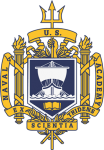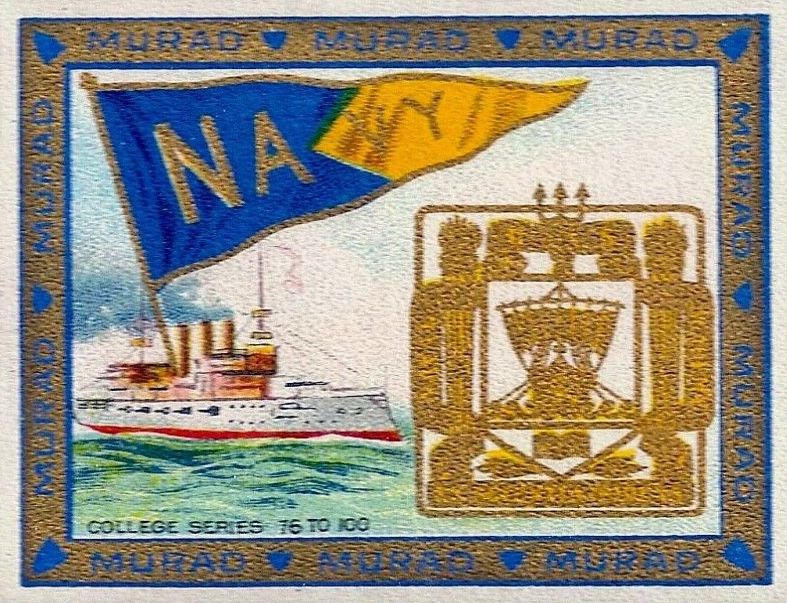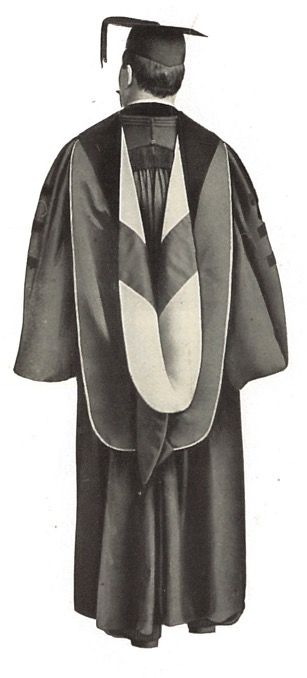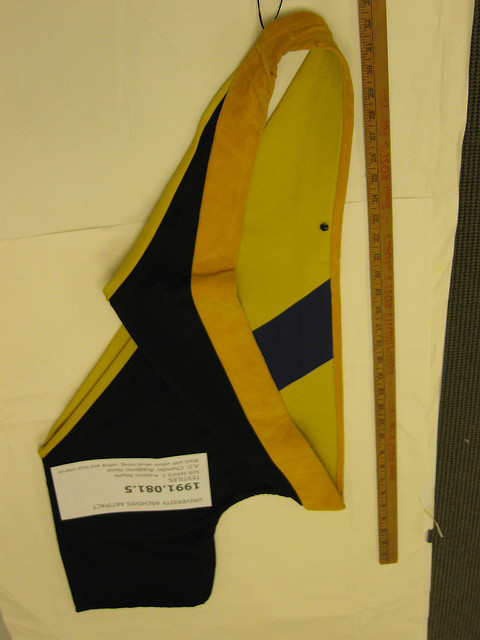United States Naval Academy
Maryland
1845



On 16 May 1895, the Intercollegiate Commission on Academic Costume approved a uniform system of academic costume for American colleges and universities called the “Intercollegiate Code of Academic Costume”. The Intercollegiate Code stipulated that the college color or colors of the institution granting the degree would be used in the lining of the institution’s hood but did not define how multiple colors would be combined in the hood lining. One of the advisors to the Commission was Gardner Cotrell Leonard, the Director of the Intercollegiate Bureau of Academic Costume (IBAC), an organization affiliated with the academic costume manufacturing firm Cotrell & Leonard. Since 1887 the IBAC had maintained a database of information about academic regalia in the US and Europe, so the Commission entrusted the IBAC with the responsibility of assigning a unique hood lining design to every college and university that chose to adopt the Intercollegiate Code.
The Commission sent a copy of the Intercollegiate Code along with a list of schools and their colors to the Living Church Quarterly, which included this information in its 1896 edition (published in December 1895). The list of college colors the Commission appended to the Intercollegiate Code was largely copied from the 1894 World Almanac. But some colleges and universities in the Commission’s list do not appear in the World Almanac, so information about these colors was probably supplied by Cotrell & Leonard from their client records.



Navy blue and old gold were adopted in 1892, the navy blue symbolizing the dark water of the ocean and the old gold symbolizing the decorations on an officer’s uniform. Like many colleges and universities using old gold in the late 1800s and early 1900s, the color would be redefined as a brighter shade of gold later in the 20th century.
Citations in the World Almanac (listed by cover date; color information is from the previous year): navy blue/old gold (1895-1896); blue/old gold (1902-1904); blue/gold (1906); navy blue/gold (1908-1911); blue/gold (1912-1935)

The Commission’s list of college colors represented the first attempt by the Intercollegiate Bureau of Academic Costume to create a record of hood linings used by American colleges and universities, but unfortunately the list did not identify which institutions on the list had actually applied to the IBAC for a hood lining assignment, nor did it describe the heraldic patterns the IBAC used to divide the colors within those hoods. Nevertheless, it seems reasonable to assume that the Bureau assigned hood lining designs to the clients of Cotrell & Leonard in the Commission’s list as early as 1895 or within a few years after that.
The “national colors” of the US Naval Academy appeared in the Commission’s list but not in the 1894 World Almanac, which means Cotrell & Leonard probably supplied this color information to the Commission. And since the US Naval Academy was a client of that firm, the Intercollegiate Bureau is likely to have registered a hood lining pattern for the academy c.1895-96. It is not known how the IBAC arranged the red, white, and blue colors in the academy’s hood lining, especially since the US Military Academy (West Point) was listed with the same colors.
At some point during the next ten or twenty years the Intercollegiate Bureau redesigned the academy’s hood. The first complete IBAC description of the Naval Academy’s hood did not appear until 1927, where it was stated to have an old gold lining with a navy blue chevron, a description that did not change in later IBAC lists.